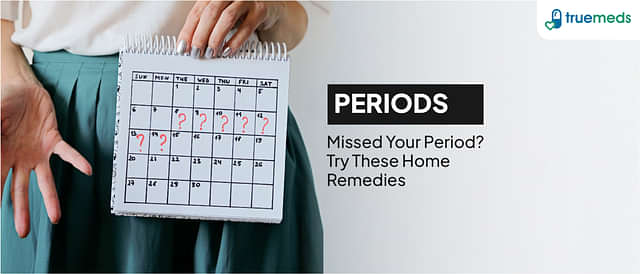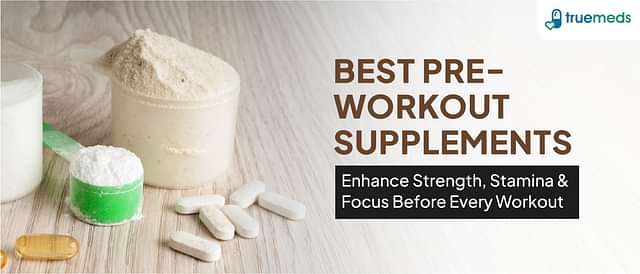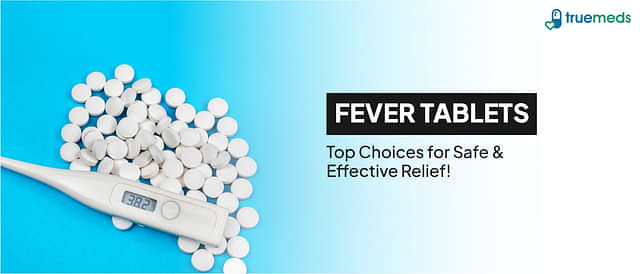How To Use Tampons And Its Pros And Cons
Last updated on : 06 May, 2025
Read time : 10 min
What is a Tampon?
Tampons are used during menstruation to soak away the blood. Similar to sanitary pads, they are made of rayon and cotton to catch any vaginal blood or fluid. It’s vital to remember that these should only be used for vaginal discharge, not for the collection of blood. so here we can use tampons. basically how do use tampons? we have to know first
This is one of the handiest menstrual items available on the market today. In the beginning stages of menstruation, how to use a tampon pad may be frightening to some women. These are the common methods of regulating menstrual flow for a safe period. Understanding how they function and getting used to the concept of utilising them are all that is required.
During your period, these absorb the blood that comes out of your vagina, preventing it from leaking out of your body. The index finger can be used to insert it without applicators. Vaginal tampons with applicators are more convenient for young girls and teens who are just starting their periods.
These can store anywhere from six to eight grams of blood, depending on their absorbency. The amount of blood you lose and the size you use will alter depending on your flow.
It can be awkward the first few times to use a tampon pad, but they can provide security and comfort if used correctly. As an additional layer of protection against leaks, some women wear a pad, pantyliner, or absorbent period underwear.
What are tampons made out of?
They’re created from either pressed cotton or rayon or a mixture of the two. To make them, a chlorine-free bleaching technique is utilised on the absorbent fibres, which prevents items from containing potentially hazardous levels of dioxin (a type of pollutant found in the environment).
Designed as disposable goods, they are disposed of once they’ve been saturated with menstrual blood. Plastic or cardboard vaginal tampon applicators are available.
How to insert a tampon?
How to use tampons? so the first time you use it, you can feel apprehensive. You should wash your hands thoroughly before getting in, and attempt to relax as much as possible so that you may easily glide in.
How to use a tampon with an applicator:
- Sit on the toilet seat, knees apart. Place your thumb and middle finger on either side of its centre grip. Affix your index finger to the cord’s extension at the thinnest part of the tube.
- Your vagina should be opened up with its tip before you insert the entire barrel, angling it towards your back. If you insert it straight up and in, it will be difficult and possibly painful.
- Insert it all the way to the centre of the applicator’s grip, between your middle and index fingers.
- To insert the absorbent portion into the vagina, grab it and push with your index finger on the little tube. To make contact with the grip and your other fingers, apply pressure to the button.
- Pull out its barrel with your thumb and middle finger, leaving the string attached. Keep your hands off the line! It is linked to the string inside the womb. Once it has soaked through, use this to remove it.
- To dispose of the applicator, put it back in the plastic lining (or wrap it in toilet paper). The plastic applicators should not be flushed.
These can be removed and reinserted higher if you can still feel it in your uterus after you’ve pulled it out. Remove it and wash your hands till you can’t feel it anymore if you think it’s not high enough.
How to use a tampon without using an applicator
Because they are smaller and easier to carry, some people may prefer to use them without an applicator because they use less plastic and are more environmentally friendly. To begin, wash your hands thoroughly and double-check that the vaginal tampon is completely sealed.
- Remove and discard the wrapper by the instructions on the package, and then unwrap the string.
- Place your index finger at the bottom of it and your thumb and middle finger on the side to hold it in place.
- Take a deep breath and relax while standing with one leg raised (with your foot resting on the toilet or bathtub) or sitting on the toilet.
- Carefully pry open the skin around the vaginal opening with the freehand you are holding.
- Take it and, using the entire length of your index finger, gently ease it into your vagina, aiming for the area below your waistline.
- When it is in the proper position, you won’t notice it at all. If you do, you should push it in a little further. Allow the string to hang freely outside of your body.
- After inserting or removing it, wash your hands thoroughly.
How to Remove a Tampon?
Remember to relax the muscles of your pelvic floor while attempting to remove it. Period tampon removal can be made easier if you sit on the toilet or stand with one foot on the edge of your bathtub.
To dispose of it, just pull the thread at the end. These can’t get inside the uterus or the vagina, yet some individuals are concerned about this.
Fortunately, they cannot become entangled in the vaginal or uterine tissues and become ineffective. A small cervical opening between your uterus and vagina permits menstrual blood to flow into your urethra, but it cannot enter your uterus.
Pros of period tampon
1. Comfort
These are more comfortable to wear than sanitary pads for most women for a safe period. Women can be more active without having to worry about their sanitary products “dropping” out of their pants.
2. Improved sanitation
Using it makes most women feel cleaner. This does not cause you to be unduly concerned about your menstrual cycle. When used for a lengthy period, pads can get soiled and smelly.
3. Allow swimming
Vaginal tampons allow you to go swimming during your period, whereas pads don’t. Because of this, they allow you to participate in sports and other physical activities more comfortably.
4. Lack of visibility
Your underwear may expose a pad through your jeans, which might be awkward. You’ll no longer have to worry about those lines when you use them, though.
5. There is no odour
If you wear your pad for an extended period, it emits a stench. As long as you remove it promptly, you can avoid scent.
6. Wear any underwear
You must wear underwear when using pads to avoid any leakage. You can wear whatever underwear and clothing you choose to use for a safe period.
7. Compact
They take up less room in your purse than sanitary napkins. Because they’re small enough to fit in any pocket or purse, sanitary products like period tampons are easy to conceal. On the other hand, these are significantly more convenient to dispose of.
Cons of period tampons
1. Toxic shock syndrome is more likely to occur (TSS)
TSS is more likely to occur if a woman uses it. Strep germs enter the bloodstream through the vagina and cause TSS. To name a few of the signs and symptoms of TSS, there’s a high temperature, vomiting, diarrhoea, dizziness, dehydration, and sometimes even muscle pain. TSS can be lethal if it isn’t diagnosed in time.
2. Uncomfortable
Because they might be more difficult to use, some women use pads instead. As it must be put into the body, women are reluctant to switch. It’s understandable why some people find them a little unnerving.
3. Not eco-friendly
Wrappers are made of polypropylene, which is not biodegradable. Its cotton is bleached with pollutants including pesticides and chlorine, according to some research. There is a little amount of dioxin used in the production and while the dioxin content isn’t high enough to be harmful, it is thought to promote inflammation.
4. No way to know when to change
Because it is not visible when in use, it’s difficult to detect if it needs to be changed. Using them over-soaked can cause a stain if you don’t notice it.
5. Residue
They can leave a residue in your vagina, which can lead to bacterial infections and inflammation. This is incredibly uncommon, yet it does occur. During removal, they may lose fibres which could lead to infections.
What information should you obtain regarding vaginal tampons and toxic shock syndrome (TSS)?
Staphylococcus aureus and Streptococcus pyogenes are two of the microorganisms that have been linked to the development of toxic shock syndrome (TSS), a rare and potentially life-threatening condition as a vaginal tampon’s side effects.
TSS is more common in women who are menstruating because of the association between the disease and its usage. When blood-soaked products are used, germs in the vagina may overgrow, according to a notion. However, a third of women who get TSS throughout their menstrual cycle are determined to have no bacteria in their vaginas that cause the condition.
In rare cases, complications from surgery or childbirth can lead to the development of TSS. Staphylococcal infections of the skin have been linked to a few cases of the syndrome in men.
Period tampons side effects associated with toxic shock syndrome
- fever
- vomiting
- diarrhoea
- a skin rash that looks like sunburn
- muscular aches
- headaches
- a sore throat
- red eyes
- confusion
- a drop in blood pressure
- joint pains
- sensitivity to light
- kidney failure
- collapse.
Tips for Safe Use of vaginal tampon
They may not be the best option for you, so you should talk to your doctor first. If you’re a user, keep these things in mind:
- Please follow all labelled directions- Make sure you read the instructions on the package, even if you’ve used it previously.
- Use soap and water to thoroughly clean your hands before and after use. This will aid in the prevention of the spread of disease.
- They are only meant to be used during menstruation and for no other purpose.
- These should be changed every 4 to 8 hours. The maximum time you should wear is 8 hours.
- If you are experiencing discomfort, fever, or any other strange symptoms, contact your doctor. Stop using it and call your healthcare practitioner if you experience any discomfort, soreness, or other unexpected symptoms like unusual discharge after inserting or wearing it if you have an allergic reaction.
- Take precautions to prevent toxic shock syndrome (TSS)- Sudden temperature (typically 102°F or greater), vomiting, diarrhoea, fainting or feeling like you are going to faint while standing up, dizziness, or a rash that appears like a sunburn are all symptoms and indicators of TSS. Any of these symptoms should prompt you to promptly seek medical assistance, even if your period is over.
For the all latest coupons and offers on medicines, follow us on Instagram and Facebook.
Disclaimer
Our healthcare experts have carefully reviewed and compiled the information presented here to ensure accuracy and trustworthiness. It is important to note that this information serves as a general overview of the topic and is for informational purposes only. It is not intended to diagnose, prevent, or cure any health problem. This page does not establish a doctor-patient relationship, nor does it replace the advice or consultation of a registered medical practitioner. We recommend seeking guidance from your registered medical practitioner for any questions or concerns regarding your medical condition.
Popular Articles
Recent Articles
Top-Selling Medicines:
...View more
Top-Selling OTC:
...View more
Company
About UsHealth ArticleHealth StoriesDiseases & Health ConditionsAyurvedaAll MedicinesAll BrandsNeed HelpFAQSubscribe
Registered Office Address
Grievance Officer
Download Truemeds

Contact Us
Our customer representative team is available 7 days a week from 9 am - 9 pm.
v3.7.31
2025 - Truemeds | All rights reserved. Our content is for informational purposes only. See additional information.
Our Payment Partners








































